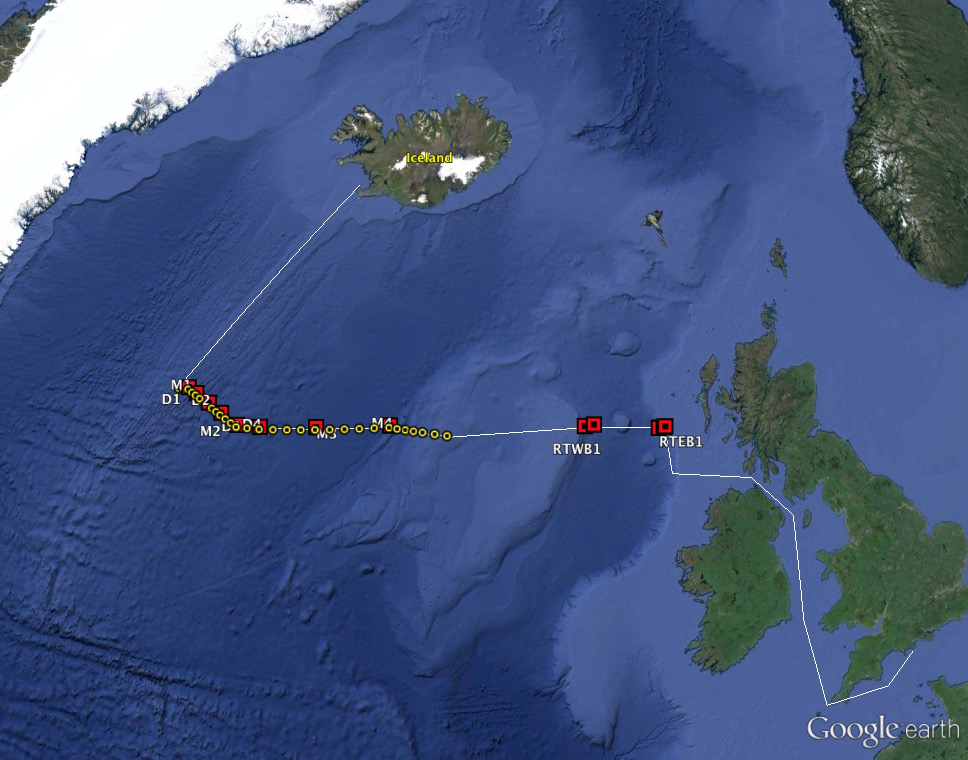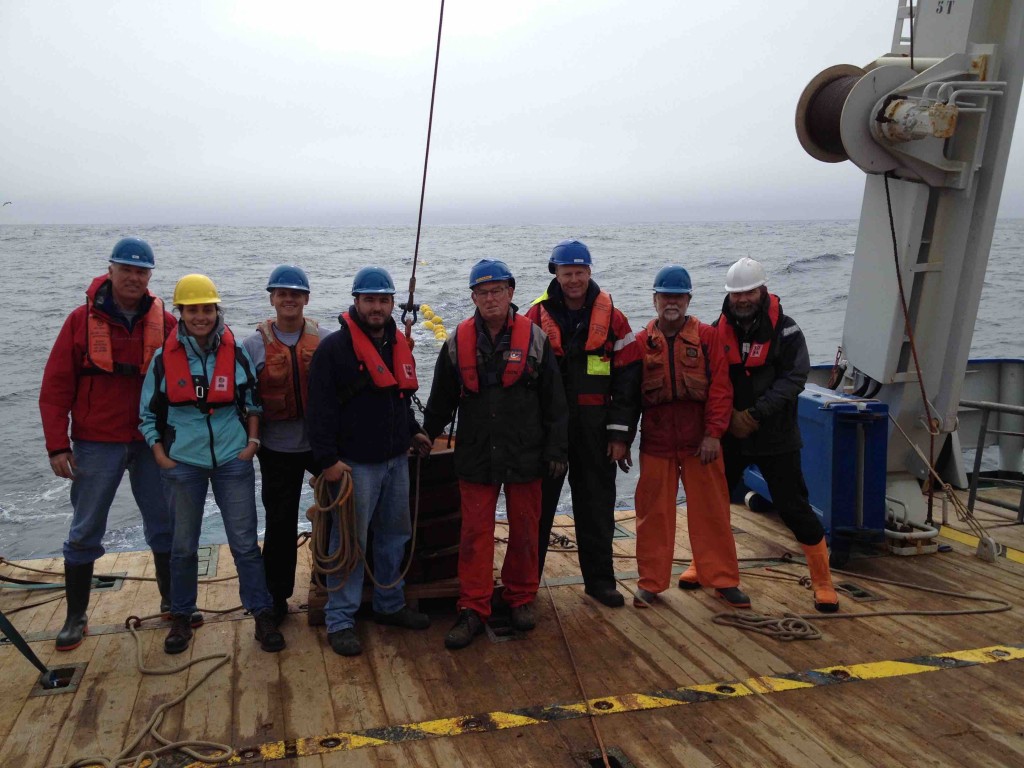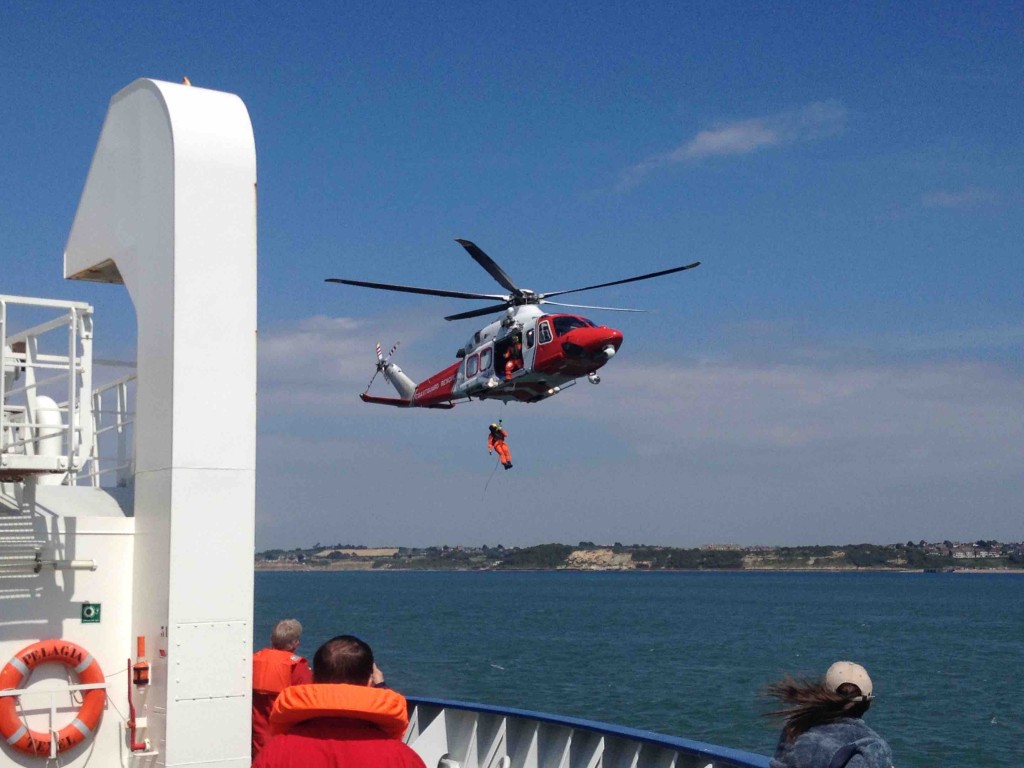by Bill Johns
Under glorious blue skies and with a fair tide running behind her the R/V Pelagia left the Port of Southampton, England on June 16th to officially begin the OSNAP field season of 2015. The two main science teams joining the cruise, from the Scottish Marine Institute (SAMS) led by Dr. Stuart Cunningham, and from the University of Miami led by Dr. Bill Johns, had been busy unpacking and preparing moored instruments at the National Oceanography Centre in Southampton for the previous several days in anticipation of the ships arrival. Also aboard are scientists from Woods Hole Oceanographic Institution and the Ocean University of China who will deploy a number of RAFOS floats and a glider along the OSNAP East line. After an efficient loading operation the ship was underway through the English Channel, around Lands End, and then northward through the Irish Sea to the first work area off the Scottish coast in Rockall Trough.

The planned cruise track of PE399. Red squares mark mooring locations to be recovered and redeployed; yellow dots represent CTD stations with lowered ADCP. The cruise departs from Southampton UK and ends in Reykjavik, Iceland.
On the way out of the Channel – barely out of port and in the middle of our first safety drill – we were surprised by a British Coast Guard helicopter asking us if they could practice landing a man on our ship – which was well agreed to by the Captain and provided an interesting diversion for all onboard. The man was safely landed on the port side of the ship the chopper then moved off and back again to retrieve him, all done very professionally and to a hearty round of applause from the ship’s crew.
We are well into the cruise now, having successfully deployed the SAMS moorings on either side of Rockall Trough, and completed the CTD section across the Iceland Basin. We are now in the process of recovering and redeploying the University of Miami array along the eastern buy clomid online flank of the Mid-Atlantic (or Reykjanes) Ridge. We have been fairly lucky with weather except for having to do some CTDs in fairly rough sea conditions, and at the moment we have changed around our sequence of mooring recoveries to dodge a storm with large swells coming out of the north. Most of the days are foggy, and many with a cold drizzle, shall we say not exactly the summer conditions the Miami science team is used to (although the Scots seem to be right at home in it!). The pictures below show some of the mooring work being done.
[portfolio_slideshow id=972]
It is exciting to finally see the data come in from the moorings. If were not superstitious I would say that we have been very fortunate with data return thus far (but please note that I did NOT actually say this.) Next to watching a 4000 lb. mooring anchor splash into the water, perhaps the most thrilling moment for someone involved in current meter work is that first new look at a long current meter record. After an initial assessment of data quality, thoughts quickly turn to speculation about what the record is trying to tell us about the ocean. There are almost always things we expected to see – which is reassuring because it means we weren’t totally clueless when we planned the experiment – but there are almost always some surprises too, and that of course is really why we are out here. So far this experiment is no exception to that rule, but it will take some time – and a lot of analysis – before we’re ready to tell the story.
On to more mooring recoveries and then a final two-day transit to Reykjavik to turn the ship over to the next science team, who will work across the Irminger Sea into the Greenland coast.

The mooring team with R/V Pelagia deck crew, standing by a mooring anchor while towing the mooring to its final deployment spot.

One response to “Leg 1 of the 2015 OSNAP Field Season – R/V Pelagia cruise PE-399”